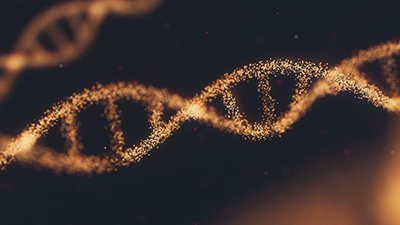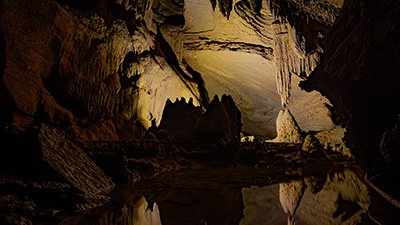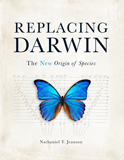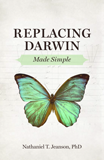
When Evolutionists Help Creationists Make Their Case: A Shocking New Case of Professional Criticism Gone Bad
Why do so many scientific professionals reject young-earth creationism (YEC)? Surveys1 reveal that around 98% of working PhD scientists accept evolution—not creation—as the explanation for human origins. How could so many intelligent people be wrong?
When mainstream reporters ask me to explain these survey results, they like to ask whether I believe in conspiracies. Do I think there is a vast conspiracy among scientists to suppress the truth about human origins? Do young-earth creationists like myself reject science altogether—as if science itself was a conspiratorial illusion?
Explaining the Other Side
For many, the answer is ignorance.
The answer I tend to give them—one which I’ve also published—is that “For many, the answer is ignorance. In the US public educational system, the courts have effectively forbidden the teaching of [specific creationist claims]. Not surprisingly, since the vast majority of scientists are trained in this public education system, they are completely unaware of the existence of my conclusions.”2 How can people reject methods, data, and conclusions when they’ve been shielded from them their whole life?
I’ve found this to be especially true for non-Christian evolutionists—even when explicitly invited to engage with creationists. For example, when I published my book Replacing Darwin,3 I sent it to leading non-Christian evolutionists for the purposes of critical review. Some never responded. One flatly told me he had no interest in critiquing it. A PhD evolutionary biologist from Marshall University agreed to debate me on the chosen topic of the science in Replacing Darwin. He showed little evidence of familiarity with the book’s contents.4
But what about evolutionists who do wrestle with creationist views—and then reject them? What if those people also happen to be professing Christians?
Rejecting “Kinds”
Let’s consider this dilemma in the specific context of the question of the origin of species. Unlike the people against whom Darwin wrote in 1859, most young-earth creationists today accept that new species form—from the kinds that God created. As a general rule, these kinds are not at the level of biological classification that we call species or even genus. For example, lions and housecats belong not only to separate species but also to separate genera. Instead, the biological classification of family is the best first approximation of what a kind is. For instance, all cats from lions to housecats belong to one family—thus, one kind. Therefore, YE creationists believe that Noah took two members of the cat family on board the Ark. Then, after the Flood, this pair diversified into over 30 different species of cats.
Young-earth creationists do not believe that one kind can change into another.
However, young-earth creationists do not believe that one kind can change into another. For example, horses cannot diversify into lions. Limited speciation within kinds is a succinct description of the young-earth view of biology. (See here and here for lay-level explanations and justifications of these concepts.)
Theistic evolutionists—those who believe God created via evolution—reject this view of the origin of species from kinds. Among the most prominent of the theistic evolutionary organizations in the US is BioLogos.5
When BioLogos wants to justify their rejection of the concept of kinds, they turn heavily to one individual: Professor of biology and professing Christian Dr. Joel Duff. His extensive blog posts on the young-earth concept of kinds—which he summarizes as hyperevolution—are their go-to source for criticism of young-earth views of speciation. From making recommendations on their forum6,7,8 to publishing an article that explicitly attacks the views of Answers in Genesis and the Ark Encounter,9 BioLogos turns to Duff. Duff is also part of their speaking team, the BioLogos Voices.10
Other theistic evolutionists turn to him as well. For example, one professing Christian scientist who endorses evolution and who has gained influence among evangelical leaders, has high praise for Duff: “Joel Duff is the resident YEC hyperevolution expert.”11
Peer-Reviewed Criticism
Recently, Duff and two colleagues took their criticisms of the YEC view of speciation a step further: publication of their critiques in a peer-reviewed journal. What is the significance of this step? Duff answered this question in a blog post that announced the paper under a section titled “The importance of peer-review”:
One reason to persist through the potentially long peer-review process is that once published the work is more easily cited by academics and thus has a longer shelf-life and potential for an enduring legacy than do blog posts… Peer-review publications are important. I’ve written nearly a million words for this blog. It is considerably easier to write for the blog and my words reach a larger and broader audience than do my 50+ peer-reviewed journal articles. The former may be accessed thousand to tens of thousands of times over a few years while the latter may only garner a few hundred reads however it has the chance to be relevant and viewed decades or even centuries later. [sic] But the most important reason to pursue publishing in a peer-reviewed journals is the process of peer-review itself. It’s great to be able to say what I want on a blog but when multiple reviewers are fact-checking and putting your ideas under the microscope. [sic] Add two additional authors with new eyes and new perspectives on the topic and the process raises the odds that the final product will be more accurate and stand the test of time. In the case of our published paper, we received considerable feedback from each of our reviewers.12
Coming from Duff, the peer-reviewed nature of his recent publication is doubly important, for reasons central to the creation/evolution debate. For example, one of Duff’s major criticisms13 of YEC publications stems from his views of peer review:
Where are the fact checkers in Young Earth Creationist’ (YEC) organizations? And why do simple errors and profound misconceptions of science persist among their ranks?... A serious problem…with the insular YEC movement is that many of their experts are not experts and even if some are experts in the field they are writing about they are being reviewed by non-experts. Yet, they make the claims that their work is peer-reviewed and wish to portray their works as being vetted and more accurate than Christians who do not agree with their interpretation of Scripture.14
Thus, a peer-reviewed article by the leading anti-YEC voice on the origin of species is especially significant, by the standards that Duff himself has set.
Converting YEC Students
Unfortunately, it also merits attention for reasons that do great damage to the case that the authors try to make. This becomes clear as we examine the details of the paper.
Overall, the focus of the authors is clear: “Today, YECs stand as the chief anti-evolutionary voices in North America and across the globe. But young-earth creationism has evolved since it was reincarnated in [sic] early in the last century.”15 As the paper shows, what they mean by “reincarnated” is the adoption by YECs of the concept of kinds.
They call it “reincarnation” because they believe the concept is a recent invention:
Early biological creationism maintained the pre-Darwinian position of species fixity…This viewpoint maintained strength within the creationist community for many years, even into the late twentieth century.16
The adoption of speciation with kinds traces its origins, they say, to the beginning in the first half of the twentieth century:
The foundations…had been laid 2 years prior in the work of Seventh Day Adventist George McCready Price and his book The New Geology (Price 1923)…In 1941, Seventh Day Adventist and botanist Frank Marsh (1941) proposed that limited speciation was possible within certain bounds. Those limits were identified with the kinds of organisms that God had originally created, as described in Genesis. This tentative acceptance of speciation allowed for limited common ancestry and gave creationists justification for accepting that some species had formed through adaptation to new environments since the creation or since departing Noah’s Ark.17
Why would creationists change their views over time? According to the authors,
Because YECs believe that “every land-dwelling, airbreathing animal in the world today owes its existence to its Ark ancestors” (Belknap and Chaffey 2019), they are driven to consolidate as many extant species as possible into broader and broader parent groups—the baramins or created kinds of their systematics. This is primarily the result of space limitations in Noah’s proposed vessel. The smaller the menagerie purported to have been contained in the Ark, the more feasible the whole narrative becomes (Woodmorappe 1996), and so postcreationists [i.e., their term for YECs who accept the concept of speciation within kinds] feel pressure to come up with ways that the vast array of extinct and extant land-dwelling vertebrate species (all other animals including aquatic vertebrates, plants, fungi, and innumerable protists and bacteria would have had to fend for themselves during the global deluge) could have been represented by the lowest possible number of Ark pairs—possibly as few as 1400 archeobaramins or basal ancestral pairs (Ham 2019).18
This, they say, has led to new problems for YECs:
…Postcreationist attempts to clarify and systematize their redefinitions of biology, as exemplified in the Ark Encounter, have led them to embrace more tenets of evolutionary biology than most realize. In doing so, they risk their followers finding out that they are not as staunchly opposed to Darwinian evolution as they have always claimed.19
Together, these various elements of the narrative that they’ve constructed form the basis for the primary purpose of the paper: catalyzing the conversion of YEC students from rejection to acceptance of evolution:
…Some students will have been raised on the idea that change within kinds is equivalent to microevolution. When it is suitable to address these misconceptions, an instructor can show that the student’s own understanding of acceptable diversification is broad enough to include the mainstream understanding of macroevolution and therefore includes most planks of the evolutionary model. This revelation forces students to re-evaluate the limits of microevolution, rather than following the creationist view and reflexively dismissing evolutionary biology. They may wonder: if all canines could have evolved from a common ancestor, then what would limit felines and canines from having a common ancestor as well? If rapid speciation could have taken place in only a few dozen centuries, what sort of diversification would be possible over hundreds of millions of years?20
Clearly, the narrative that they’ve constructed is central to their overall goals. It’s also factually incorrect—though this is one of the lesser problems with their thesis.
When Did Creationists Embrace “Kinds”?
The creationist position—that new species can form from kinds/families—traces much further back than the authors concede in the paper.
The creationist position—that new species can form from kinds/families—traces much further back than the authors concede in the paper. By definition, all positions on the formation of new species cannot be older than the term species. In today’s debate over the origin of species, the definition of species goes back to Linnaeus—i.e., the 1700s. Early in his career, Linnaeus held that God created individual species. Later in his career, his position looked remarkably similar to the current creationist view of the origin of species from kinds or families. About a century later, this was news to one rather famous evolutionist:
In a letter from Charles Lyell to the Swedish professor Sven Lovén dated 15 December 1867 the English geologist expressed his thankfulness at having been informed about the species concept of Linnaeus. The great Swedish botanist had later in life changed his view of the fixity of species and integrated further experience with his basic concept of creation to accommodate his opinion about the created original kinds. Incidentally, Lyell also mentioned in his letter that his friend Charles Darwin was quite surprised, when he, in turn, was told that Linnaeus has changed his mind.21
Why did Linnaeus change his mind? Because he observed hybridization between species22—which happens to be one of the criteria by which modern creationists identify members of the same kind to this day. Consequently, Linnaeus adopted a position almost indistinguishable from modern YEC:
[Linnaeus] proposed that dog, wolf and fox belonged to the same created genus and that they were products of hybridization.23
Today, modern biologists place the fox in a separate genus—but in the same family—as dogs and wolves. Thus, effectively, Linnaeus was arguing for the formation of new species within families, which is a good summary of the modern YEC view.
Duff and his colleagues make no mention of this, instead advancing a narrative about changing YEC views because of “problems” fitting animals on the Ark. What’s more, the dog-fox-wolf example—and the example of canines and carnivores in general—forms the central illustration for the arguments of Duff and colleagues.
Again, this seemingly minor factual error is foundational to their purpose:
As will be shown, young-earth creationists depend on their rhetoric being perceived as “consistent” or “unchanging” and thus they would dispute any implication that their views have departed significantly from earlier conceptions. However, the qualitative shift in their synthesis, particularly with respect to the degree of evolutionary change they now accept, places the new young-earth creationists’ model firmly beyond the creationism recognized by their predecessors.24
Hyperevolution?
Narrative questions aside, where does this history leave modern YECs with respect to the new problem that Duff and colleagues claim to identify? Regardless of how YECs arrived at their concept of kinds, doesn’t this view imply hyperevolution? Have YECs embraced Darwinian evolution without knowing it?
Again, Duff and his coauthors selectively report the details on how YECs have answered these questions. For example,
Their conception of natural selection enjoys virtually no constraints on how quickly it can produce new species…
They propose that excess genetic variation was supernaturally pre-loaded into the common ancestors of living species by an act of miraculous creation and expressed through an accelerated, poorly-understood version of natural selection…
In their popular messaging, YECs point to observed speciation events reported by mainstream science as evidence of biological potential for rapid speciation, but have given comparatively little attention to advancing viable mechanisms for this form of natural selection.25 [emphases added]
Creationists have published long, detailed, scientifically testable explanations for how species form from kinds, and the mechanisms are not limited to natural selection.
In fact, creationists have published long, detailed, scientifically testable explanations for how species form from kinds, and the mechanisms are not limited to natural selection. This has been done at the technical (see here26) and lay levels (see here, here, and here), and in book form (see here27and here28).
Furthermore, many of the scientific points that they raise in the paper have already been addressed explicitly and implicitly. Conspicuously absent from the long list of creationist references at the end of their paper, are a reference to Replacing Darwin—the comprehensive written-for-critics explanation for the YEC origin of species—or a reference to a direct reply that I wrote to many of the points that Duff made previously on the BioLogos website, and repeated in the paper. Thus, in one sense, this paper simply confirms the thesis I set forth four years ago: “evolutionists are unaware of our scientific literature; and even when they become aware, they appear to prefer ignorance of the key scientific details.”29
But this time, the mistakes appear to go deeper than shoddy research or accidental oversights.
Scientific Misconduct?
On one hand, this selective reporting on YEC is nothing new. One of the co-authors, David MacMillan, was previously caught critiquing the concepts in a YEC paper apparently without bothering to read even the first paragraph of the work in question.
On the other hand, the paper by Duff and his colleagues presents a particularly egregious example of poor scholarship—one that appears to rise to the level of scientific misconduct. In the current paper, the authors strove to show that the YEC concept of kinds leads to the supposedly intractable problem of hyperevolution. To justify this claim, they attempted to show that YECs themselves admit to this problem:
In fact, Jeanson and Lisle (2016) recognize yet another challenge to the postcreationist paradigm: they have identified no breaks or barriers to prevent the eventual emergence of species so different that, if compared, would certainly be viewed as representing different original kinds. They state: “hence, robust YEC explanations for the origin of a vast number of species must explain not only how genetic mechanisms produce many phenotypes, but also how these processes did not transform one kind into another.” Thus postcreationists, in their attempts to show scientific rigor, unwittingly uncover the very mechanisms that prove the opposite of their model. If they cannot identify a barrier to a modern species producing descendants which would by their method appear to descend from different original kinds, they cannot effectively argue that two species they currently consider to represent distinct kinds might not have originally diversified from a single ancestral clade.30
This quote from Jeanson and Lisle comes from the Introduction section of their paper.31 Organized like so many scientific papers, the Jeanson and Lisle paper contains the following sections:
- Abstract (i.e., the paragraph-long summary of the paper)
- Introduction (i.e., the section that sets up the problem to be solved)
- Materials and Methods (i.e., the section describing the key methodological details)
- Results and Discussion (i.e., the section describing the results of the methods employed, along with reflection on the implications of the results)
- Conclusion
In trying to show that YECs openly admit to supposedly unsolved problems, the authors selectively quoted from the Introduction. They failed to report what we stated in the Results and Discussion section, in which we showed, through numerous lines of evidence, a solution to the problem. We even included a summary section explicitly addressing the very problem that we supposedly had no answer to. For instance:
The conclusions we described above on the mechanism by which species originated on the YEC timescale naturally also explain why limits to speciation exist… Thus, the major fraction of the potential for each ‘kind’ to speciate was hard-wired into each ‘kind’ from the start, implying that changing one ‘kind’ into another would require dramatic genotypic [i.e., DNA] rewiring of a creature. Since upwards of 75% of the genotypic diversity observable today (>90% of the genotypic diversity in some cases) had its origins in the Creation Week, genotypic rewiring does not seem possible apart from a miracle or massive intelligent human intervention. Hence, the CHNP model [i.e., the explanation put forth in the Jeanson and Lisle paper] seemed to simultaneously explain the dramatic but limited speciation with ‘kinds’…
In summary, we anticipate that the vast majority of metazoan ‘kinds’—perhaps nearly all eukaryotic ‘kinds’—will eventually be shown to derive >90% of their intra-‘kind’ genotypic diversity from the creation acts during the Creation Week. If this turns out to be true, then converting one ‘kind’ into another ‘kind’ would appear impossible apart from miraculous genetic intervention. Since Scripture records no such event, our model naturally explains why ‘kinds’ cannot be converted into other ‘kinds.’32 [bold emphases added]
Again, the authors are free to disagree with YEC conclusions. They’re welcome to state the reasons why they think our explanation is wrong. But they cannot misrepresent what YECs say in order to bolster their point—especially when the point is a central illustration of their argument.
Could this have been an accidental mistake? Have they, once again, failed to read and engage the YEC literature?
A brief perusal of their list of YEC references33 from familiar authors and publications suggests otherwise:
- Ark Encounter. How many bats were on Noah’s Ark? Accessed from The Ark Encounter. https://arkencounter.com/blog/2016/06/23/how-many-bats-were-on-noahs-ark/. Accessed 17 Mar 2020.
- Belknap M, Chaffey T. Reimagining Ark Animals. Accessed from Answers in Genesis. https://answersingenesis.org/noahs-ark/reimagining-ark-animals/, Accessed 16 May 2019.
- Ham K. [AigKenHam] The wolf & coyote are different species & evolutionists claim this took thousands of years, yet the differences between the Great Dane & Yorkshire Terrier are much greater but they are the same species & we know were bred in the last few hundred yrs. Evolution is bankrupt. https://twitter.com/aigkenham/status/973156054702882818. [Tweet] 12 Mar 2018.
- Ham K. How many animals were on the Ark? https://answersingenesis.org/media/audio/answers-with-ken-ham/volume-127/how-many-animals-were-on-ark/. Accessed 19 June 2019.
- Hennigan T. An initial estimate toward identifying and numbering amphibian kinds within the orders Caudata and Gymnophiona. Answ Res J. 2013;6:17–34.
- Hennigan T. An initial estimate toward identifying and numbering extant tuatara, amphisbaena, and snake kinds. Answ Res J. 2014;7:31–47.
- Jeanson NT. Mitochondrial DNA clocks imply linear speciation rates within “kinds”. Answ Res J. 2015;8:273–304.
- Lightner JK. Mammalian ark kinds. Answ Res J. 2012;5:151–204.
- Lightner JK, Ahlquist J. Founder events: foundational in rapid post-flood diversification. Creat Res Soc Q. 2017;53(3):217–24.
- Lightner JK, Hennigan T, Purdom G, Hodge B. Determining the Ark kinds. Answ Res J. 2011;4:195–201.
- Menton D. Is evolution a theory, a fact, or a law?—or none of the above? St. Louis MetroVoice 1993:3(10). https://answersingenesis.org/theory-of-evolution/evolution-theory-fact-or-law/. Accessed 15 May 2019.
- Menton D. Natural selection and evolution. St. Louis MetroVoice. 1994:4(2). https://answersingenesis.org/natural-selection/natural-selection-and-macroevolution/. Accessed 15 May 2018.
- Morris HM. Scientific creationism. Green Forest: New Leaf Publishing Group; 1974.
- Morris JD. What is the difference between macroevolution and microevolution? Acts & Facts. 1996;25(10). https://www.icr.org/article/what-difference-between-macroevolution-microevolut/.
- Morris HM, Parker G. What is creation science?. Green Forest: New Leaf Publishing Group; 1982.
- Morris HM, Whitcomb JC. The Genesis flood: the biblical record and its scientific implications. Phillipsburg: Presbyterian & Reformed Publishing; 1961.
- Osborne B. Do animals evolve. Lecture presented at: 2016: Creation Museum, Petersburg, Kentucky. https://www.facebook.com/AnswersInGenesis/videos/10155180229564899/.
- Patterson RT. Evolution exposed: your evolution answer book for the classroom. Answers in Genesis; 2008.
- Viett K. Giraffes: towering testimonies to God’s design. 2017. https://answersingenesis.org/mammals/giraffes-towering-testimonies-to-gods-design/. Accessed 15 May 2019.
- Wise KP. Faith, form, and time: what the bible teaches and science confirms about creation and the age of the universe. Nashville: B&H Publishing Group; 2002.
- Wise KP. Mammal kinds: how many were on the Ark. CORE Issues Creat. 2009;5:129–61.
- Wise KP. Baraminology: a young-earth creation biosystematic method. In: Proceedings of the second international conference on creationism. Vol. 2. Pittsburgh, PA: Creation Sci. Fellowship, Inc.; 1990. p. 345–60.
- Wood TC. The current status of baraminology. Creat Res Soc Q. 2006;43(3):149–58.
- Wood TC. Mitochondrial DNA analysis of three terrestrial mammal baramins (Equidae, Felidae, and Canidae) implies an accelerated mutation rate near the time of the Flood. In: Proceedings of the seventh international conference on creationism. 2013.
- Wood TC, Garner PA, editors. Genesis kinds creationism and the origin of species. Eugene: Wipf and Stock Publishers; 2009.
- Wood TC, Wise KP, Sanders R, Doran N. A refined baramin concept. Occasional Papers of the BSG. 2003;3:1–4.
- Woodmorappe J. Noah’s ark: a feasibility study. Dallas: Institute for Creation Research; 1996.
There’s one familiar reference that I omitted—the reference from which they selectively quoted:
- Jeanson NT, Lisle J. On the Origin of eukaryotic species, genetic clocks, population growth curves, and comparative nuclear genome analyses suggest created heterozygosity in combination with natural processes as a major mechanism. Answ Res J. 2016;9:81–122.
When Scientists Misrepresent Data
In the realm of science, dishonesty is the cardinal sin.
When I was an undergraduate, my lab supervisor made me aware of a very public example of scientific misconduct. We had just attended a major plant research conference, and one of the lead researchers there had been caught falsifying data. He had done an experiment, and then claimed to have repeated it. Instead, the “repeat” was simply his original data rearranged. To most outsiders, this would seem rather minor. In the realm of science, dishonesty is the cardinal sin. Imagine what would happen if a potential treatment for cancer was based on falsified results. Life and death hang in the balance. My lab supervisor told me that the prominent researcher’s error—in plant research, not human medical research—would prevent the researcher from obtaining a university research position for the rest of his life.
In the paper by Duff and his colleagues, they claim that YECs admit to a major unsolved problem—a problem at the heart of the YEC concept of kinds. However, one of the main pieces of data that Duff and his colleagues cite to support their contention is a dishonest quote from a YEC paper.
Sadly, in the “Authors’ contributions” section of the paper by Duff and colleagues, the error appears to have been shared: “All authors read and approved the final manuscript.”34 Furthermore, none of the peer reviewers appears to have caught this misrepresentation. It would be fair to ask if the many criticisms that Duff levied at process of YEC peer review (see above) don’t, in fact, apply more readily to mainstream publications than to YEC ones.
To be clear, this report is not a personal attack on any of the authors. The conclusions that I’ve reached on their actions come from the data that they’ve presented—and omitted—in their paper. This critique is not personal but professional. Professionally, Duff is one of the leading—if not the leading—voice of opposition to the concept of speciation within kinds. I am simply holding him and his coauthors to the standard of science that they profess, and which the rest of the scientific community endorses.
Why do so many professional scientists reject creation science? Sadly, not only do many appear to be ignorant of what creationists claim, some also appear to deliberately misrepresent creationists when it suits their purposes—in this case, the conversion of YEC students from rejection to acceptance of evolution.
Footnotes
- Pew Research Center, “An Elaboration of AAAS Scientists’ Views,” July 23, 2015, https://www.pewresearch.org/science/2015/07/23/an-elaboration-of-aaas-scientists-views/.
- Nathaniel T. Jeanson, “Why Don’t More People Accept the Young-Earth View of Speciation?,” The Origin of Species After the Flood web series, August 6, 2016, https://answersingenesis.org/natural-selection/speciation/why-dont-more-people-accept-the-young-earth-view-of-speciation/.
- Nathaniel T. Jeanson, 2017. Replacing Darwin: The New Origin of Species. Green Forest, AR: Master Books.
- Nathaniel T. Jeanson, “Replacing Darwin on the Debate Stage: A Report on an Unusual, but Promising, Beginning for a Provocative Book,” Answers in Depth 13 (September 25, 2018), https://answersingenesis.org/charles-darwin/replacing-darwin-debate-stage-report/.
- https://biologos.org/
- https://discourse.biologos.org/t/more-faith-in-the-scientific-method-than-gods-revelation/25927/54
- https://discourse.biologos.org/t/biologos-irony-yec-oec/36495/119
- https://discourse.biologos.org/t/biblical-kinds/39487/16
- Joel Duff, “Did Modern Animals Evolve From the Inhabitants of the Ark?” August 31, 2016, https://biologos.org/articles/did-modern-animals-evolve-from-the-inhabitants-of-the-ark/
- https://biologos.org/voices/
- https://discourse.peacefulscience.org/t/behe-s-latest-arguments-a-review-of-darwin-devolves/7733/4
- R. Joel Duff, “Dissent with Modification: Young-Earth Creationists Deny and Accept Macroevolutionary Theory,” May 21, 2020, https://thenaturalhistorian.com/2020/05/21/dissent-with-modification-young-earth-creationists-deny-and-accept-macroevolutionary-theory/.
- E.g., see how many blog posts he has written on it: https://thenaturalhistorian.com/?s=peer+review
- R. Joel Duff, “When Peer Review Lets You Down: A YEC Quote Problem,” August 31, 2015, https://thenaturalhistorian.com/2015/08/31/when-peer-review-lets-you-down-a-yec-quote-problem/
- R. Joel Duff, Thomas R. Beatman & David S. MacMillan III, “Dissent with modification: how postcreationism’s claim of hyperrapid speciation opposes yet embraces evolutionary theory,” Evolution: Education and Outreach 13, no. 9 (2020): 14, https://doi.org/10.1186/s12052-020-00124-w.
- Ibid, 4–5.
- Ibid, 4–5.
- Ibid, 7.
- Ibid, 13.
- Ibid, 14.
- Per Landgren, “On the origin of ‘species’: Ideological roots of the species concept.” Chapter in Siegfried Scherer, ed. Typen des Lebens (Pascal-Verlag: Berlin, 1993) 47-64. Quote from p.47.
- See Landgren, 1993.
- Ibid, p.61.
- Duff et al., “Postcreationism’s claim,” 6.
- Ibid.
- Nathaniel T. Jeanson and Jason Lisle, “On the Origin of Eukaryotic Species’ Genotypic and Phenotypic Diversity: Genetic Clocks, Population Growth Curves, and Comparative Nuclear Genome Analyses Suggest Created Heterozygosity in Combination with Natural Processes as a Major Mechanism,” Answers Research Journal 9 (2016):81–122.
- Nathaniel T. Jeanson, Replacing Darwin Made Simple (Petersburg, KY: Answers in Genesis, 2019).
- Jeanson, New Origin.
- Jeanson, “Why.”
- Duff et al., “Postcreationism’s claim.”
- Jeanson et al., “Eukaryotic Species.”
- Jeanson et al., “Eukaryotic Species,” 116 (quotes).
- Duff et al., “Postcreationism’s claim,” 15–16.
- Duff et al., “Postcreationism’s claim,” 15.
Recommended Resources

Answers in Genesis is an apologetics ministry, dedicated to helping Christians defend their faith and proclaim the good news of Jesus Christ.
- Customer Service 800.778.3390
- © 2024 Answers in Genesis







